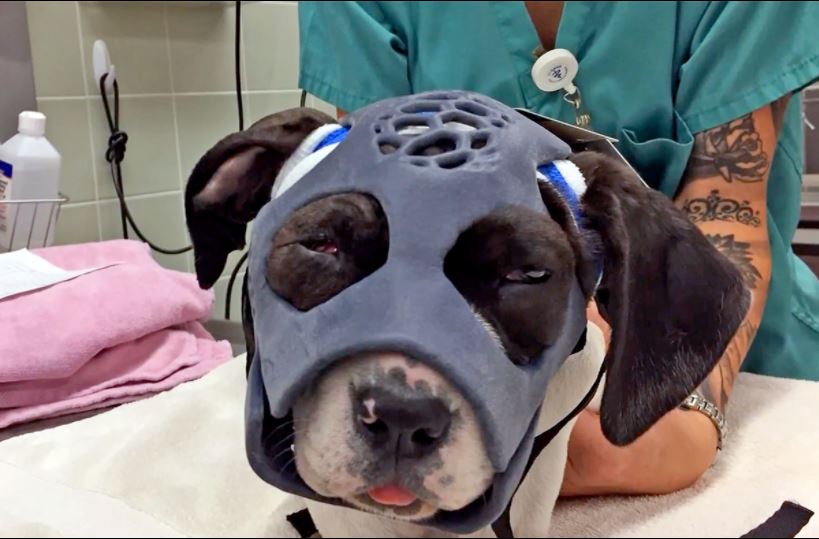
New 3D-printed Mask Helps Heal Puppy's Fractured Skull

A new 3D-printed mask helped a puppy in California heal after its face was severely wounded in an attack by another dog.
The puppy, a 4-month-old female Staffordshire bull terrier named Loca, arrived at the University of California Davis School of Veterinary Medicine with a fractured cheekbone and jawbone — the result of a severe dog bite. In addition, she had a damaged temporomandibular joint (or TMJ, which connects the jawbone to the skull), and puncture wounds on her face and neck, according to a statement from the University.
Loca's doctors saw her case as an opportunity to use a new approach for treating facial fractures — a 3D-printed "exoskeleton" mask for dogs. Work on such a mask, known as the Exo-K9 Exoskeleton, was already underway at the university, as part of a collaboration between the veterinary hospital and the U.C. Davis College of Engineering.
The mask works much like a traditional cast for the arms or legs, meaning it holds the affected bones in place while they heal. [7 Surprising Health Benefits of Dog Ownership]
The engineers used a CT scan of Loca's skull to design a custom-fit mask, which was then printed with a 3D printer. Loca was the first patient to try the Exo-K9 mask, the university said.
After 1 month of wearing the mask, a CT scan showed that new bone was forming. Loca was then allowed to eat hard kibble to help her new TMJ become a functional joint — otherwise, it might fuse with her skull, the statement said. Another CT scan performed 3 months later showed that her TMJ healing was "progressing nicely," and that she is continuing to recover from her injuries.
Original article on Live Science.
Sign up for the Live Science daily newsletter now
Get the world’s most fascinating discoveries delivered straight to your inbox.

Rachael is a Live Science contributor, and was a former channel editor and senior writer for Live Science between 2010 and 2022. She has a master's degree in journalism from New York University's Science, Health and Environmental Reporting Program. She also holds a B.S. in molecular biology and an M.S. in biology from the University of California, San Diego. Her work has appeared in Scienceline, The Washington Post and Scientific American.









